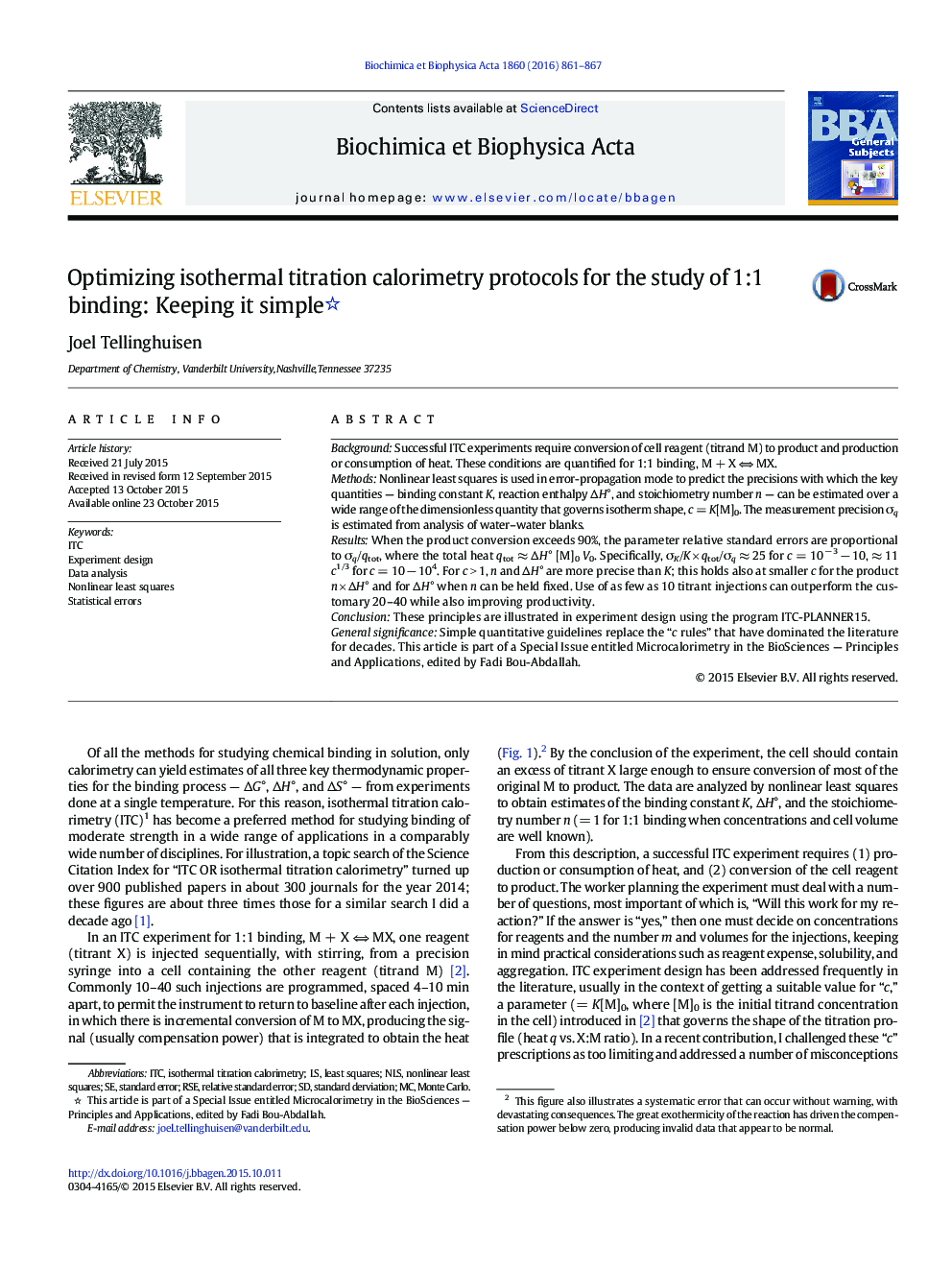| کد مقاله | کد نشریه | سال انتشار | مقاله انگلیسی | نسخه تمام متن |
|---|---|---|---|---|
| 1947326 | 1054593 | 2016 | 7 صفحه PDF | دانلود رایگان |
• An optimal ITC protocol should achieve > 90% conversion of titrand M to product.
• Then K and ΔH° have precision proportional to total heat, qtot ≈ ΔH° [M]0 V0.
• Also important: the measurement precision σq, estimable from water–water blanks.
• Specifically, σK/K × qtot/σq = 25 (c = K[M]0 ≈ 10–3 – 10), ≈ 11 c1/3 (c > 10).
• The program ITC-PLANNER15 facilitates protocol design.
BackgroundSuccessful ITC experiments require conversion of cell reagent (titrand M) to product and production or consumption of heat. These conditions are quantified for 1:1 binding, M + X ⇔ MX.MethodsNonlinear least squares is used in error-propagation mode to predict the precisions with which the key quantities — binding constant K, reaction enthalpy ΔH°, and stoichiometry number n — can be estimated over a wide range of the dimensionless quantity that governs isotherm shape, c = K[M]0. The measurement precision σq is estimated from analysis of water–water blanks.ResultsWhen the product conversion exceeds 90%, the parameter relative standard errors are proportional to σq/qtot, where the total heat qtot ≈ ΔH° [M]0 V0. Specifically, σK/K × qtot/σq ≈ 25 for c = 10 − 3 − 10, ≈ 11 c1/3 for c = 10 − 104. For c > 1, n and ΔH° are more precise than K; this holds also at smaller c for the product n × ΔH° and for ΔH° when n can be held fixed. Use of as few as 10 titrant injections can outperform the customary 20–40 while also improving productivity.ConclusionThese principles are illustrated in experiment design using the program ITC-PLANNER15.General significanceSimple quantitative guidelines replace the “c rules” that have dominated the literature for decades. This article is part of a Special Issue entitled Microcalorimetry in the BioSciences — Principles and Applications, edited by Fadi Bou-Abdallah.
Figure optionsDownload high-quality image (145 K)Download as PowerPoint slide
Journal: Biochimica et Biophysica Acta (BBA) - General Subjects - Volume 1860, Issue 5, May 2016, Pages 861–867
